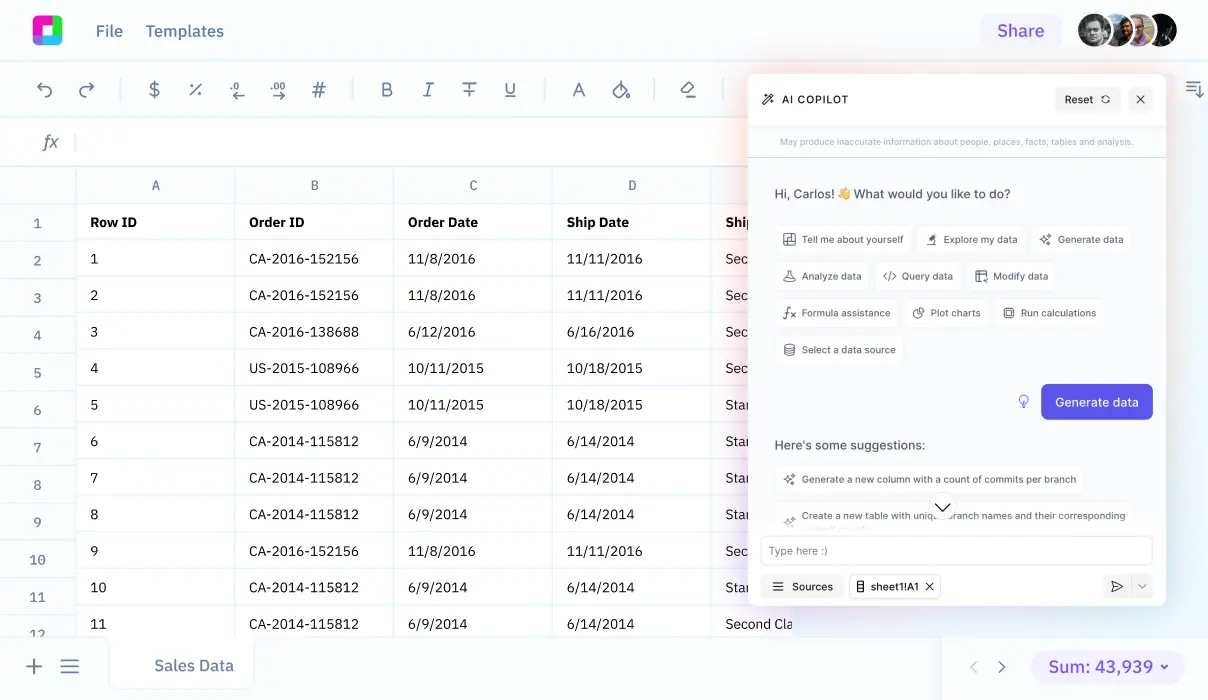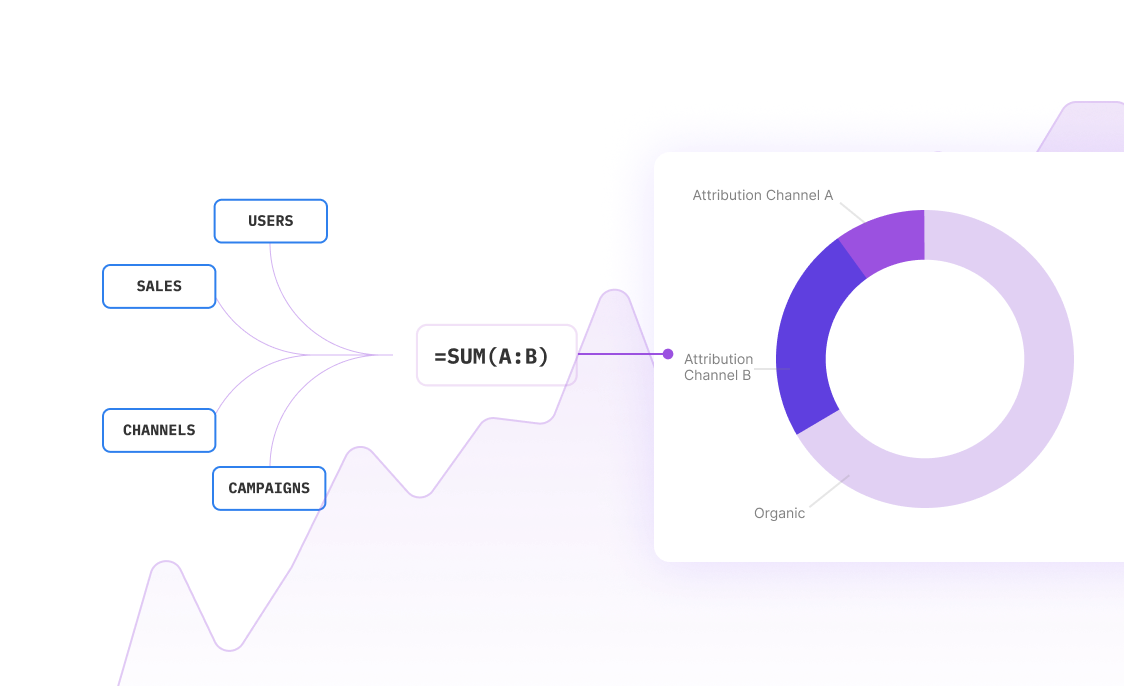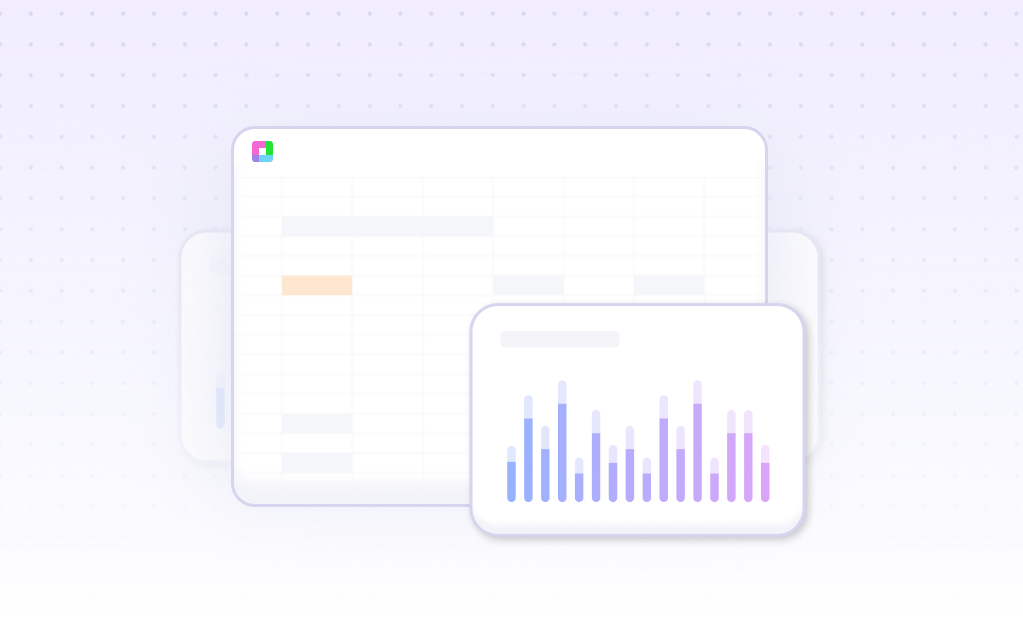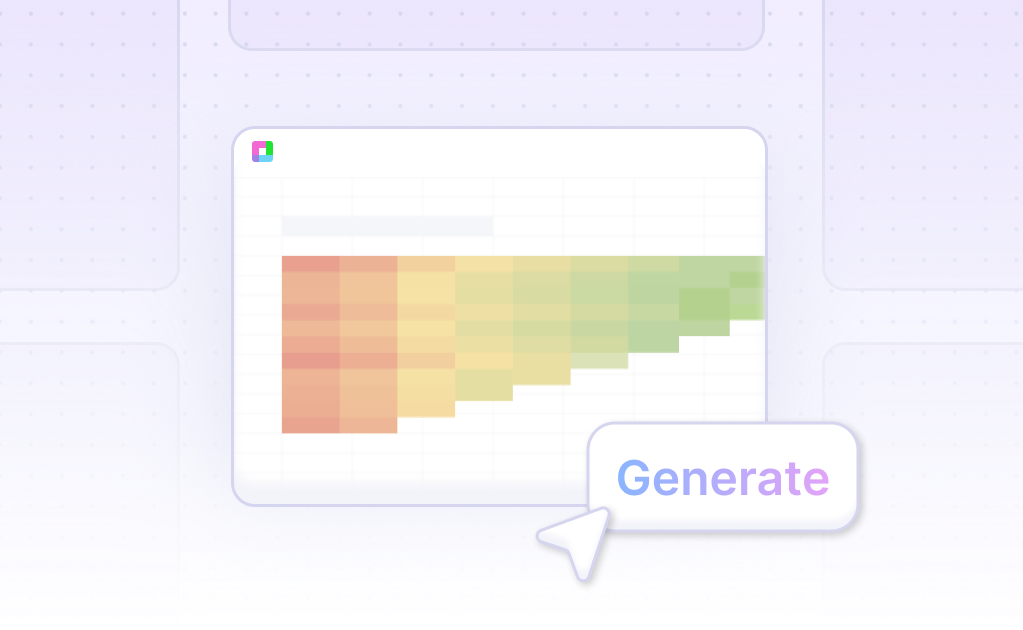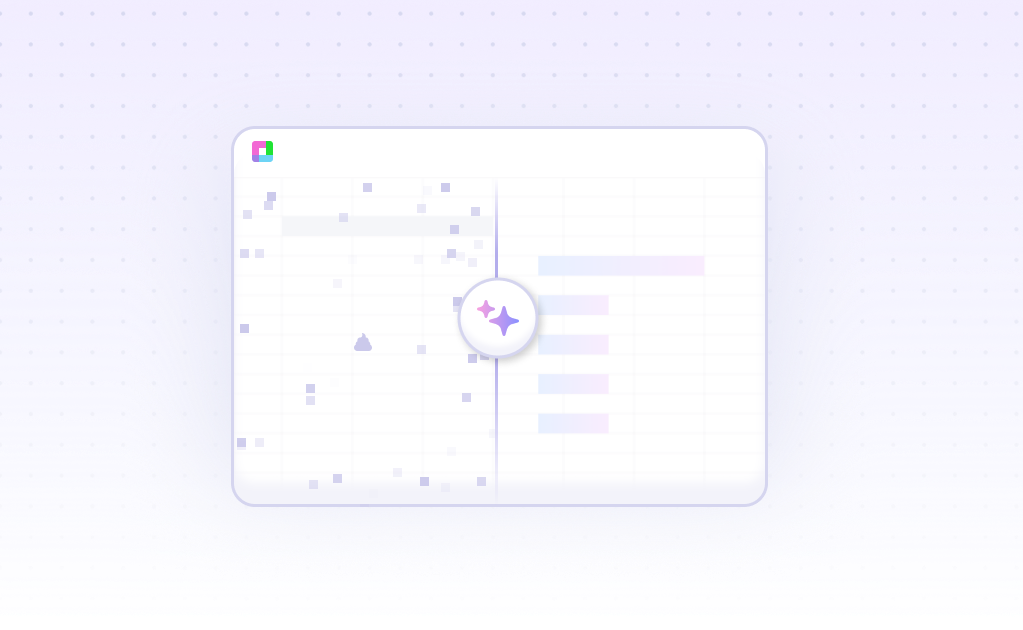
Introduction
Creating a 3-D Stacked Column Chart can be a powerful way to visualize complex data. This task can be achieved through traditional spreadsheet programs like Excel or Google Sheets. These standard tools offer basic functionalities for chart creation.
Sourcetable, an AI-powered spreadsheet, elevates this process by integrating an AI assistant designed to help users efficiently create precise spreadsheets, charts, and graphs. This tool is especially beneficial for those aiming to become spreadsheet power users without extensive training.
To learn how to effortlessly generate your first 3-D Stacked Column Chart using Sorucetable's intuitive AI features, sign up at Sourcetable or continue reading for detailed instructions on both AI-driven and traditional methods.
What Is a 3-D Stacked Column Chart?
A 3-D stacked column chart is a powerful data visualization tool used to compare different datasets and show their composition. Each stack in the column represents a dataset, with the length of each stack proportionate to its value. This visual cue effectively showcases the cumulative magnitude of multiple datasets, offering a clear comparison.
This chart type is particularly valuable for presenting comparative data, such as sales figures across various regions or website traffic sourced from different acquisition channels. By displaying data in a stacked manner, it allows for easy analysis of each item's individual contribution to the overall total.
Creating a 3-D stacked column chart involves selecting the data, navigating to the Insert menu, and choosing the "stacked column with a 3-D visual effect" option in the Chart Wizard. The remaining customization follows the standard wizard options.
When to Use a 3-D Stacked Column Chart
Overview
A 3-D stacked column chart is ideal for comparing data across categories and visualizing part-to-whole relationships over time. This chart is best used when you need to display multiple datasets and want to show the contribution of each part to the whole.
Pros of 3-D Stacked Column Charts
3-D stacked column charts allow for easy comparison of constituent parts. They provide a clear visual depiction of trends and patterns over time. The 3-D aspect offers a visually engaging way to present complex data.
Cons of 3-D Stacked Column Charts
While 3-D stacked column charts can be visually appealing, they may distort the perception of data due to their dimensionality. It's harder to accurately compare values, especially in the deeper layers. They can also be more challenging for the audience to interpret quickly.
Comparison with Other Charts
Bar charts and 2-D stacked column charts are simpler alternatives. Bar charts are easier to read and compare values side by side. 2-D stacked column charts eliminate the distortion risk present in 3-D charts, making data interpretation more straightforward.
Conclusion
Select a 3-D stacked column chart if aesthetics and showcasing multiple data series are priorities. Opt for a bar chart or 2-D stacked column chart when clarity and simplicity are essential.
How to Generate a 3-D Stacked Column Chart with Sourcetable
- Sourcetable, an AI spreadsheet, makes it easy to create a 3-D Stacked Column Chart. To start, create sample data using Sourcetable's AI assistant or upload a CSV. This initial step ensures you have the data ready for visualization.
- Next, select a range of data you want to turn into a 3-D Stacked Column Chart. Ensure your selection accurately represents the dataset you intend to visualize. Proper data selection is crucial for generating meaningful charts.
- Ask Sourcetable's AI assistant to generate the 3-D Stacked Column Chart. This step leverages AI to automate the chart creation process. It's fast, efficient, and minimizes human error.
- Finally, refine and iterate on your 3-D Stacked Column Chart. Use the AI assistant to specify changes to formatting, labels, and other chart elements. This customization ensures that your chart meets your specific needs and preferences.
How to Generate a 3-D Stacked Column Chart in Excel or Google Sheets
Creating a 3-D Stacked Column Chart in Excel
To create a 3-D stacked column chart in Excel, start by selecting the area of data you want to visualize. Organize this data in a table format. Next, go to the "Insert" menu, choose "Chart," and then select the "stacked column with a 3-D Visual effect" option. Follow the remaining steps in the chart wizard to finalize your 3-D stacked column chart. You can further customize the chart by adding a title, legend, and adjusting the chart elements as needed.
Generating a 3-D Stacked Column Chart in Google Sheets
In Google Sheets, begin by selecting the data set you want to visualize. Navigate to the "Insert" tab and click on "Chart." In the chart editor, go to the "Setup" tab and select "Stacked column chart" in the "Chart type" section. Adjust the data range, X-axis, and Series sections to fit your needs. Customize your chart further in the "Customize" tab of the chart editor to achieve the desired visual effect. If you aim to create a chart with three different columns over each X-axis value, set the series axes to left and right, which will result in two chart columns per data point.
Both Excel and Google Sheets provide robust options for creating and customizing a 3-D stacked column chart, allowing you to effectively visualize your data with a 3-D visual effect.
Use Cases Unlocked by Visualizing Data Using a 3-D Stacked Column Chart
Comparative Sales Analysis |
A 3-D Stacked Column Chart allows businesses to compare sales data across multiple categories over time. By visualizing sales performance in a single, comprehensive view, companies can quickly identify trends, patterns, and areas needing improvement. This can lead to more informed strategic decisions. |
Market Share Representation |
Visualizing market share of different products or brands within a single 3-D Stacked Column Chart helps businesses understand their positioning relative to competitors. This insight is crucial for adjusting marketing strategies and allocating resources more effectively. |
Budget Allocation Tracking |
Organizations can use 3-D Stacked Column Charts to track budget allocations across various departments. This visualization simplifies financial data, making it easier to monitor spending and ensure adherence to budgetary constraints, aiding in more efficient financial management. |
Project Progress Monitoring |
Project managers can leverage 3-D Stacked Column Charts to track the progress of different project components simultaneously. This enables better coordination, timely identification of bottlenecks, and efficient resource allocation, ensuring projects stay on schedule. |
Website Traffic Sources |
Web developers and marketers can visualize the origins of website traffic using 3-D Stacked Column Charts. This display can reveal insights into the effectiveness of various marketing channels, aiding in optimizing digital marketing strategies and efforts. |
Frequently Asked Questions
What is a stacked bar chart?
A stacked bar chart extends standard bar charts by looking at numeric values across two categorical variables instead of one.
When should you use a stacked bar chart?
Use stacked bar charts to compare numeric values between levels of a categorical variable.
How should the categorical variables be ordered?
Categorical levels should be ordered from largest to smallest.
What are the best practices for using stacked bar charts?
Best practices include starting the y-axis at 0, showing the sum value on top of each column, adding up values for different categories plotted on the chart, maintaining a zero-baseline, and using effective colors.
What are some common misuses of stacked bar charts?
Common misuses include using 3D charts which are not good for showing relationships in data.
Conclusion
In this guide, we've explored the 3-D Stacked Column Chart, a visually impactful tool for data presentation. We covered how to utilize AI technology in Sourcetable for an efficient and simplified chart creation process, and contrasted this with traditional methods using common spreadsheet programs like Excel and Google Sheets.
Whether you're a novice or looking to enhance your data visualization skills, the integration of AI in Sourcetable offers a unique advantage. It permits the creation of dynamic and comprehensive charts including the 3-D Stacked Column Chart, thanks to its AI spreadsheet assistant.
To experience the ease and innovation of AI-driven data visualization, sign up for Sourcetable today and generate your first 3-D Stacked Column Chart effortlessly.
Frequently Asked Questions
If you question is not covered here, you can contact our team.
Contact Us
